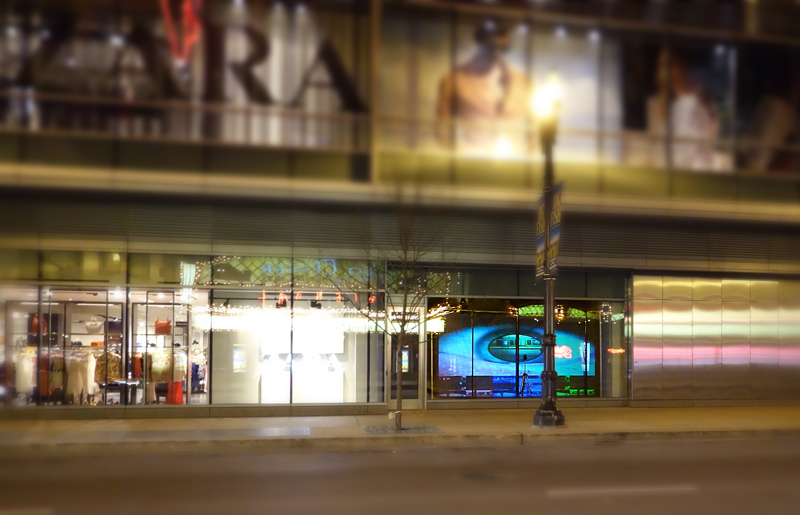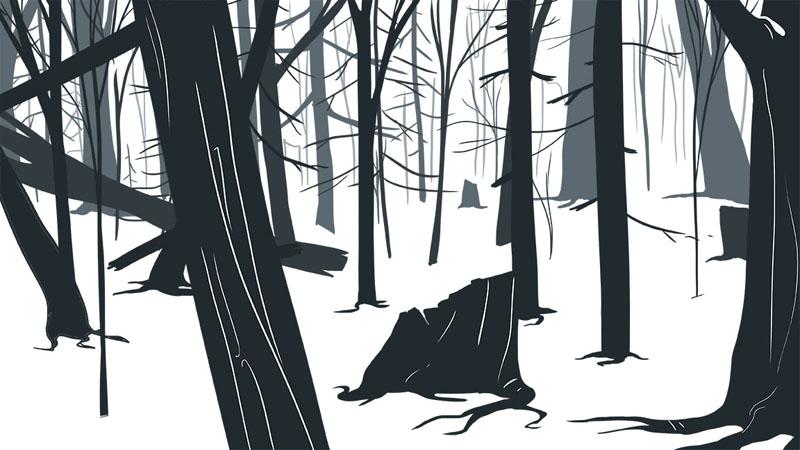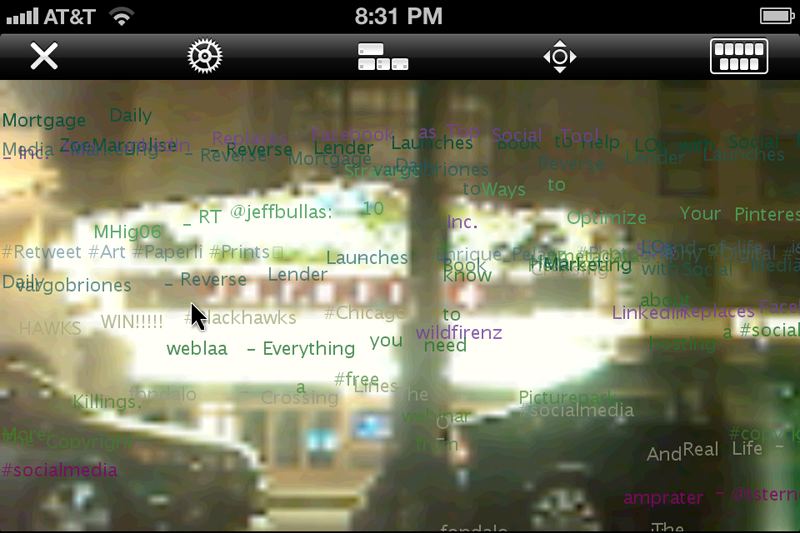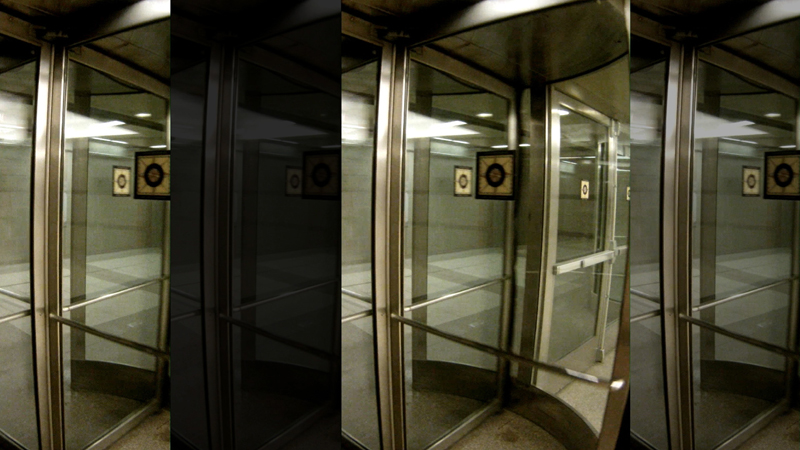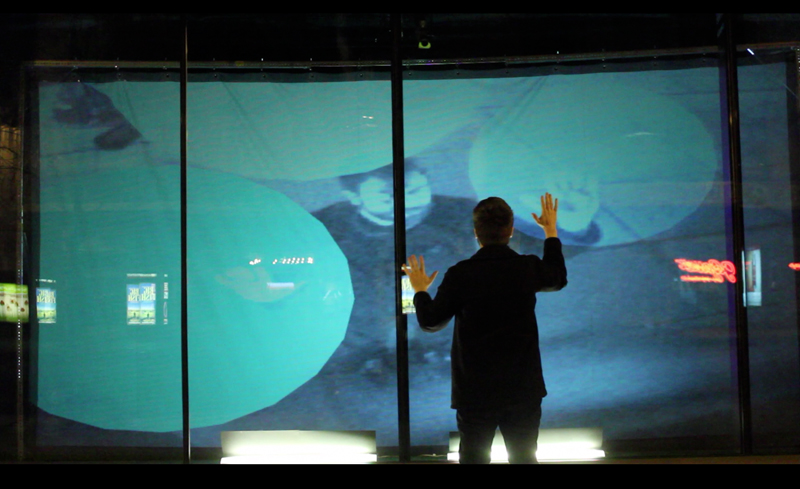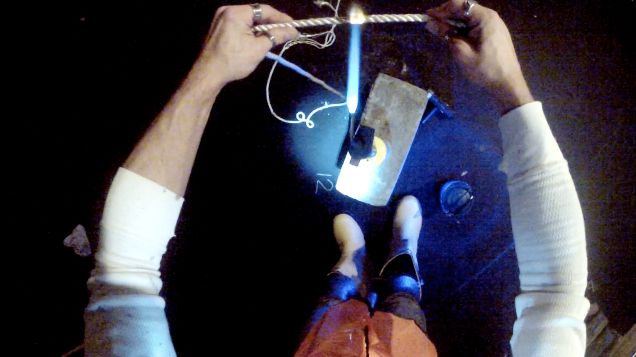Difference between revisions of "Public Art 2013 Storefront Projects"
(→FOR PUBLIC CONSUMPTION) |
|||
| Line 1: | Line 1: | ||
| − | |||
BACK TO PUBLIC ART MAIN PAGE [[http://imamp.colum.edu/mediawiki/index.php/Public_Art]] | BACK TO PUBLIC ART MAIN PAGE [[http://imamp.colum.edu/mediawiki/index.php/Public_Art]] | ||
| Line 36: | Line 35: | ||
[[Image:Please Use the Revolving Door Screenshot1.jpg]] | [[Image:Please Use the Revolving Door Screenshot1.jpg]] | ||
| − | “Symbiotic Bodies” By Justin Botz and Tom Ruiz | + | [http://youtu.be/L71gkLx3Yfc] “Symbiotic Bodies” By Justin Botz and Tom Ruiz |
It has been over 50 years since J.C.R. Licklider wrote his influential essay entitled, “Man-Computer Symbiosis” and the study of peoples relationship to machines is no less fascinating. In this piece we are interested in exploring the relationship between people and computer. We will use blob detection to track the bodies of passersby. With that data we will project an aura like image onto the windows that will react to the movement of the spectators in front of the store. We hope this piece will facilitate the creation of moments of heightened consideration of the spectators relationship to time, space, and other viewers. When the viewer becomes aware of their effect on the public space they are invited to play, interact and consider for a moment the world around them,themselves, and their relationship to other bodies in the space. | It has been over 50 years since J.C.R. Licklider wrote his influential essay entitled, “Man-Computer Symbiosis” and the study of peoples relationship to machines is no less fascinating. In this piece we are interested in exploring the relationship between people and computer. We will use blob detection to track the bodies of passersby. With that data we will project an aura like image onto the windows that will react to the movement of the spectators in front of the store. We hope this piece will facilitate the creation of moments of heightened consideration of the spectators relationship to time, space, and other viewers. When the viewer becomes aware of their effect on the public space they are invited to play, interact and consider for a moment the world around them,themselves, and their relationship to other bodies in the space. | ||
Revision as of 21:19, 15 April 2013
BACK TO PUBLIC ART MAIN PAGE [[1]]
FOR PUBLIC CONSUMPTION
"For Public Consumption" is a pop-up installation in Block37 in downtown Chicago. Created by students in the Interdisciplinary Arts and Media MFA and Interactive Arts and Media BA programs, the show aims to transform a storefront into a public art gallery, with rotating video and interactive media pieces that all deal with the act of living in a public environment.
"Eyesight Surveillance Window" by Leo Selvaggio
Eyesight Surveillance Window is an interactive public installation in which pedestrians can interact with and manipulate a live feed of themselves. This live feed is masked in the pupil of a giant human eyeball, moving and blinking in real time. Below the eye, there are three other fragmented video images stacked horizontally each tinted in one of the tri-chromatic colors according to human color vision theory: Red, Green or Blue. A surveillance camera is clearly visible and is pointing out into the audience space. As a participant moves with in the surveilled area (wave hand, jump up and down, move left to right) they immediately notice that their motion proportionally defragments the three videos below, eventually resulting in a clear unfragmented image. The viewer may then also notice that each of the three videos is actually a recording of others that previously inhabited the surveilled area. Thus, they are currently being recorded and their image deposited in one of the three video channels for future participants to see.
"Boy in Woods" by Greg Browe
There is a forest full of black, menacing trees. Their trunks are wide, and their branches hang far above. The ground is white with snow, save the occasional errant twig. Suddenly, a young boy hops out from behind a tree, and runs to another trunk. Some time passes before he feels ready to do it again, and now the boy runs from an entirely different tree to another. It’s as if he traverses the intervening spaces while we aren’t watching, and it’s only our gaze that forces him to describe his movements, become animated, illustrated, and make a go for the next trunk. Boy in Woods is an animated projection wherein media engages with the frame and tests its physical and contextual boundaries. In a way, the animation of the piece resembles a Scooby Doo chase scene, as the gang inexplicably bursts out of one room and then the next - their path unclear. This challenges the viewer, and the ability of an audience to find anything concrete or explanatory in the piece. The boy is constantly moving, and therefore never settles in one place or on one idea. The resulting video would be formatted to fit most, but not all, of the panes of glass. Care will be taken to line up the seams with trees in order to make the presentation as flawless and unobtrusive as possible.
"How are you feeling?" by Adrienne Canzolino, Graham Heath
For this work, users will send tweets to a Twitter account that will display on the window. The tweets would flow, like water, on the projected windows and move and fall around a person standing in front of the window. As the person moves, the words would move with them. As the words fall, more words would be pulled from the Twitter stream. In order to keep words flowing, people would tweet at the account. There would be a static element quickly describing how to get words to populate (such as “tweet @this account”). Crude or inappropriate language will be automatically deleted before it reaches the screen.
["Please Use the Revolving Door"] by Scott Dickens
Patented in 1888 by Theophilus Van Kannel of Philadelphia, the revolving door helps to conserve energy in both the summer and winter months, provides security by regulating entry, and helped Van Kennel earn the John Scott Medal for the revolving door's usefulness to society. However, Please Use the Revolving Door is a celebration of the less tangible qualities of the revolving door. These include the pertinence of the revolving door to Chicago's visual and audial landscape to those who can see and hear it, as well as its relevance to how the city is navigated and experienced by those with the ability to use it. mockup at: [2]
[3] “Symbiotic Bodies” By Justin Botz and Tom Ruiz
It has been over 50 years since J.C.R. Licklider wrote his influential essay entitled, “Man-Computer Symbiosis” and the study of peoples relationship to machines is no less fascinating. In this piece we are interested in exploring the relationship between people and computer. We will use blob detection to track the bodies of passersby. With that data we will project an aura like image onto the windows that will react to the movement of the spectators in front of the store. We hope this piece will facilitate the creation of moments of heightened consideration of the spectators relationship to time, space, and other viewers. When the viewer becomes aware of their effect on the public space they are invited to play, interact and consider for a moment the world around them,themselves, and their relationship to other bodies in the space.
“the Twelve Labors: Chapter 2, a Digital Theatre Production”
by: Dennis Michael Burke
Originally inspired by the myth of “Hercules and the Twelve Labors,” this video (or digital theatre production, as I refer to it...), which is only the first six of the twelve labors, compounds my year long visual investigation of masculinity, and labor generated aesthetics-as conceived through the interpretative lens of the Hercules myth-into a mediated and time based spectacle of image, sound, and text.
Within this iteration are visuals both mass produced, (as in publicly uploaded videos intended for mass consumption), and hermetically produced, (as in privately recorded performances by the artist for digital production)-that mix the literal vocabulary of the base myth with the personal/individual vocabulary of my interpretations and actions.
The work offers provocative illustrations of the convoluted structures behind interpretation and representation of masculine codes and symbols; within the historical and contemporary context of visual narratives.
"Portrait of Chicago" by Folleh Tamba
“Portrait of Chicago” was inspired by the Orson Welles’ quote, “We're born alone, we live alone, and we die alone. Only through our love and friendship can we create the illusion for the moment that we're not alone.”
Portrait of Chicago is an experimental video art installation that explores the diverse faces of one of the most segregated cities in America. There are 200 neighborhoods in the city of Chicago. Portrait of Chicago is my attempt to reinforce our social contract, the collectiveness of our humanity in a diverse city that is sometimes alienating. In a frame of a 58mm camera lens I will capture a close-up shot of a resident from each neighborhood saying “HELLO” in English and whatever other language(s) they speak.
The video will play on a loop and the 200 hundred faces will fade one into another, signifying our oneness.
